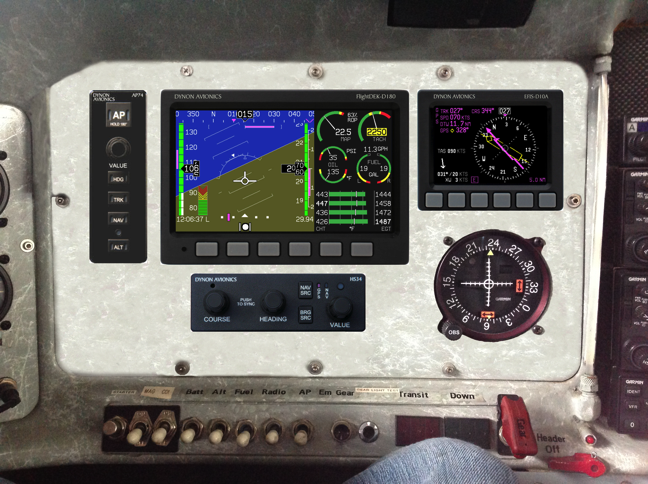Mid-Lifer Kicker Time
I went to Sun'n'Fun since it had been a while since I've gone. While there I looked around at new planes. After all, I have owned 'Rapid Transit' for over 6 years now.
Well, I looked and I looked, but came to the conclusion that even today nothing offers combination of performance, aerobatics, and SPEED that the G3 offers. Surprisingly the economy too. If I actually had the discipline to throttle back and fly around at 150knots, the fuel burn would be much lower than my old Cessna.
The one serious temptation was the Tecnam P2006; something completely different. Though tempted, at the end of the day, losing 80 knots in cruise would not have been acceptable even though the plane was thoroughly modern and had that new plane smell.
HOWEVER, it IS time to refresh the Glasair. After all, it is pushing 20 years old. The panel is kind of dated. I recently sold my RV-8A project, but I kept the Dynon D180 I has purchased for it some time ago.
The current main panel setup:
The existing right-side sub-panel:

There is a ton of really nice, and incredibly capable new glass out there, but it is really hard to justify a wholesale replacement, especially since I already own the D-180. The Garmin 430's work just fine and there is really no way to get lost with a pair of those in the panel. The Century Autopilot is acceptable, but requires the DG and AI gyros; both vacuum and both very heavy.
A possible upgrade is to use the D180 for all the capabilities possible, retain the D10A as an HSI, and remove all the leftover instruments. There is probably ore than 15 pounds of savings there overall. The main panel would look like this:

The surprising effect of the D180 is the integration of engine instruments. Every instrument on the right sub-panel could be subsumed by the D180.
The only debate is to whether to use the Dynon for the CHT and EGT indications. The presentation on the D180 is really geared for 4-cylinder engines. 6-cylinder engine representation is a little crude. My JPI EGT/CHT is pretty powerful and I will probably keep it as the only gauge on the right side. Overall, though, a dramatically simpler structure and much weight will be shed. Wiring is not tough, just tedious. Working in the limited panel space will be a trick, and the largest mechanical effort will be the replacement of the autopilot servos.
This is a project to be pre-wired, then implemented at the next annual (summer 2014).


